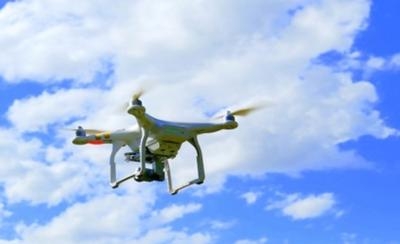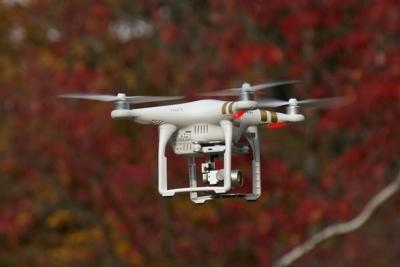Fri, Dec 01, 2017
Expresses Desire To Make The State A Welcoming Location To Test And Develop Technology
Michigan's Unmanned Aircraft Systems Task Force (UASTF) released a report of recommendations it presented to Gov. Rick Snyder and to the state Legislature regarding unmanned aerial systems (UAS), or drones. The report presents a desire to have a regulatory environment, which respects state and federal areas of authority, but also establishes Michigan as a welcoming location to test, develop, and deploy this technology.

The 27-member task force was established by Public Act 436 of 2016 when it was signed into law by the governor on Jan. 3, 2017.
"As the use of drones becomes more popular for commercial and recreational use, it is critically important that we develop a statewide policy to ensure the safety of Michiganders while still allowing the creative freedom necessary for developing new applications for this technology, " Snyder said. "I appreciate the work this task force has done and look forward to working with my legislative partners to implement their recommendations."
The task force agreed that Michigan is well-positioned to capitalize on the numerous benefits of UAS to be fully realized whether for commercial use, aiding the mission of public agencies, or simply the enjoyment by recreational enthusiasts. At the same time, the task force found there needs to be clear standards for special situations for public safety and protection of personal privacy.

"I would like to thank the members and staff of the task force," said Mike Trout, MDOT Office of Aeronautics executive administrator and UASTF chair. "The task force members recognize that public awareness for all users will be essential to prevent misunderstandings, inadvertent violations of laws, and potentially dangerous situations. A robust education effort will be a necessary complement to the regulatory framework."
The Michigan UASTF has made the following recommendations:
- Establish an Unmanned Aerial System Joint Program Office (UASJPO) to coordinate public agency efforts and provide a unified voice for Michigan’s citizens seeking UAS information.
- Recognize the Michigan Unmanned Aerial Systems Consortium (MIUASC) or other appropriate entity as the primary association for private entities and universities to collaborate and interface with the UASJPO.
- Reaffirm the Michigan Aeronautics Commission as the state body responsible for all aeronautical activity in the state with authority to develop rules, regulations, policies, and procedures for the use and integration of UAS in Michigan.
- Develop an education and outreach strategy to address coordinated educational outreach efforts for local governments, law enforcement and users.
- Design and distribute recommended guidelines for public agency data sharing and record retention policies for state agency data collected by UAS.
- Recommend the Legislature enact legislation establishing an extension of self-principle. This means actions that are currently allowed or prohibited by persons would apply to persons using an UAS.
- Explore deployment of a UAS traffic management (UTM) system in Michigan to explore feasibility of state airspace protections.
- Enact a state law to prohibit UAS interference with the operation of key and unique facilities. Mackinac Island is a strong example of a unique facility in Michigan.
- Clarify Michigan Compiled Laws (MCL) Section 259.321, which regulates UAS interference with official duties of police officers, firefighters, paramedics, or search and rescue personnel to ensure other appropriate public safety officials are included.
- Develop a submission for the Federal Aviation Administration (FAA) UAS Integration Pilot Program.
- Coordinate with other state and federal agencies to address current and future regulatory barriers.
- Identify opportunities to share technological innovations among industry partners.
- Expand the mission of the American Center for Mobility (ACM) to include Unmanned and Autonomous Aerial Vehicles and Systems.
(Source: State of Michigan news release. Image from file)
More News
From 2023 (YouTube Version): Legacy of a Titan Robert (Bob) Anderson Hoover was a fighter pilot, test pilot, flight instructor, and air show superstar. More so, Bob Hoover was an i>[...]
Get The Latest in Aviation News NOW on Instagram Are you on Instagram yet? It's been around for a few years, quietly picking up traction mostly thanks to everybody's new obsession >[...]
Aero Linx: B-52H Stratofortress The B-52H Stratofortress is a long-range, heavy bomber that can perform a variety of missions. The bomber is capable of flying at high subsonic spee>[...]
Altimeter Setting The barometric pressure reading used to adjust a pressure altimeter for variations in existing atmospheric pressure or to the standard altimeter setting (29.92).>[...]
"Knowing that we play an active part in bettering people's lives is extremely rewarding. My team and I are very thankful for the opportunity to be here and to help in any way we ca>[...]
 Classic Aero-TV: Remembering Bob Hoover
Classic Aero-TV: Remembering Bob Hoover ANN FAQ: Follow Us On Instagram!
ANN FAQ: Follow Us On Instagram! ANN's Daily Aero-Linx (05.15.24)
ANN's Daily Aero-Linx (05.15.24) ANN's Daily Aero-Term (05.15.24):Altimeter Setting
ANN's Daily Aero-Term (05.15.24):Altimeter Setting Aero-News: Quote of the Day (05.16.24)
Aero-News: Quote of the Day (05.16.24)




